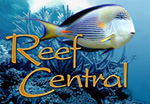Hi guys,
I have noticed my fungia plate coral has receded quite dramatically, as I can start to see his white skeleton on the edges. He doesnt seem to be extending his tentacles and im not sure what could be wrong with him.
As you can see in the pictures, he isnt opening up and inflating like usual and notice the browning on top.
My params are: 0 ammonia, 0 nitrites, 5ppm nitrate, 8-8.2ph, 8 alkalinity (getting this up as we speak).
I have tried moving him out of the flow and I recently introduced a goby that has been spitting sand on him constantly - I decided to move him up higher just now.
Also recently upgraded the light to a much better one - most of my corals seem to be doing alright (torch, frogspawn, hammer, duncan, goni).
Also I noticed the other week the plate had literally moved onto one of my small frogspawns and killed it - what happened here? Didnt even think they could move.
Any help would be greatly appreciated!
Thanks guys!



Sent from my SM-N920I using Tapatalk
I have noticed my fungia plate coral has receded quite dramatically, as I can start to see his white skeleton on the edges. He doesnt seem to be extending his tentacles and im not sure what could be wrong with him.
As you can see in the pictures, he isnt opening up and inflating like usual and notice the browning on top.
My params are: 0 ammonia, 0 nitrites, 5ppm nitrate, 8-8.2ph, 8 alkalinity (getting this up as we speak).
I have tried moving him out of the flow and I recently introduced a goby that has been spitting sand on him constantly - I decided to move him up higher just now.
Also recently upgraded the light to a much better one - most of my corals seem to be doing alright (torch, frogspawn, hammer, duncan, goni).
Also I noticed the other week the plate had literally moved onto one of my small frogspawns and killed it - what happened here? Didnt even think they could move.
Any help would be greatly appreciated!
Thanks guys!



Sent from my SM-N920I using Tapatalk
